Acta Materialia Gold Medal
The deadline for nominations for all Acta Materialia and Acta Biomateriala awards is February 1st each year. For the Acta Materialia Silver medal and the Acta Biomaterialia Silver medal, the nominees must be 45 years or younger on December 31 the previous year.
The Acta Materialia Gold Medal recognizes demonstrated leadership in the field of Materials Science and Engineering. It rewards either
- materials research that has had a significant and lasting impact on the development of the discipline, or
- recent work of great originality.
With this distinction Acta Materialia, Inc. not only intends to honor outstanding contributions to the field but also to improve the awareness of the fundamental importance and diversity of materials research, both within the community and the public at large.
The Acta Materialia Gold Medal Award consists of a gold medal, an inscribed certificate, and a cash prize of US$ 10,000.
Candidates for this award may be proposed by any scientist/engineer/practitioner or any materials related society, previous Acta award recipients, Sponsoring or Cooperating Societies of Acta Materialia, Inc., and Editors of the Acta Materialia journals.
The nomination package should contain
- Curriculum vitae
- Statement by the nominator specifying the candidate’s suitability for the award**
- Letters of support from up to three distinguished scientists in the field
- Citation of not more than 30 words
**Please emphasize the nominee’s impact on their research field, rather than the metrics on their publications.
Nominations remain in effect for three years unless withdrawn or re-endorsed, with additional justification, for an additional two-year period. Current members of the Acta Materialia Board of Governors and of the Award Selection Committee are not eligible.
The Award Selection Committee is formed of five judges, themselves distinguished materials scientists.
The Acta Materialia Gold Medal is awarded each year, unless the judges feel no candidate is qualified. The presentation is made at a venue approved by the Acta Materialia Executive Committee. The Award will not be bestowed in absentia except in extraordinary circumstances.
Nominations should be submitted to the Executive Secretary (Prof. Carolyn Hansson, [email protected]), preferably as a single file document in PDF or Word format.
Acta Materialia, Inc.
Acta Materialia, Inc. (https://www.actamaterialia.org) is a non-profit organization representing 36 professional societies worldwide. It is dedicated to disseminating the knowledge of science and engineering of materials, primarily by publishing high quality journals covering all aspects of the multidisciplinary field of materials science and engineering, including biomaterials, nanomaterials, materials chemistry and physics. The corporation publishes four journals in collaboration with Elsevier: Acta Materialia, Scripta Materialia, Acta Biomaterialia, and Materialia.
Acta Materialia Gold Medal Award Recipients
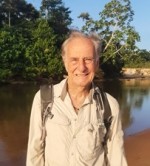
Marc Meyers
Marc André Meyers hails from João Monlevade, Minas Gerais, where his father was a rolling mills engineer and later director at Companhia Siderúrgica Belgo Mineira (presently Arcelor Mittal), the first integrated steel mill in Brazil. He is a graduate (Mechanical Engineering) of the Federal University of Minas Gerais, and earned his doctorate at the University of Denver. Professors Charles Barrett and R. Norman Orava were mentors who inspired him to pursue an academic career. He held university positions at the Military Institute of Engineering (Rio de Janeiro), South Dakota School of Mines and Technology, and New Mexico Institute of Mining and Technology, prior to joining the University of California, San Diego where he is Distinguished Professor.
Dr. Meyers’ visionary effort at unifying dispersed activities through the fundamental physics and chemistry principles relevant to high strain rate deformation have given rise to the field of dynamic behavior of materials. The principles developed have been relevant for designing high rate forming and fabrication processes as well as material failure during impact or explosive loading applications. The principal scientific contributions for which he is recognized include: the mechanisms of generation of annealing twins, dislocation generation under shock-loading, slip-twinning transition in metals and recrystallized nano/micrstructure in adiabatic shear bands.
Although his area of specialization is the dynamic behavior of materials, he has contributed to nanocrystalline materials, synthesis and processing, and mechanical properties in general, with an emphasis on fundamental mechanisms.
In recent years he has turned his curiosity and effort to biological, biomedical, and bioinspired materials and, in particular, how they derive their mechanical properties in terms of their hierarchical structure/architecture. His work in this area, whether associated with abalone shells, toucan beaks, fish scales or teeth, among many other biological materials, has been an inspiration and has generated world-wide interest in terms of the complex structure/property relationships that they portray and the complicated nano/micro-mechanisms that underlie their mechanical performance.
In addition , he exercised global leadership throughout his career and worked toward the integration of the American Materials societies, co-organizing and co-chairing three Pan American Materials Congresses (2010, 2014, and 2017). He co-founded (with L. E. Mur) five EXPLOMET conferences and proceedings. With Max Brook, he co-founded the Center for Explosives Technology Research (now named EMRTC)at New Mexico Tech. He co-chaired the TMS symposia on Dynamic Behavior of Materials and created the Rinehart Award, the highest accolade in the European DYMAT Assoc. In the biomaterials domain, he co-chaired two international conferences on Mechanics Biomaterials and Tissues. With Sungho Ji, he co-founded TMS Biomaterials Symposium. As a trustee, TMS Foundation, he is spearheading an effort to support Latin American students to TMS meetings. He is also editor-in-Chief, Brazil-originated (ABM) Journal of Materials Research and Technology now widely recognized and projecting Latin American materials research globally.
In the educational area, he taught over hundred classes, advised 56 doctoral dissertations and authored or co-authored four successful textbooks translated into Chinese and Portuguese and organized four summer schools with leading scholars and students recruited globally He also writes fiction and retraced the 1914 Roosevelt Rondon expedition to the Amazon in 2014.
Dr. Meyers is a Fellow of TMS, APS, ASM International and the Brazilian Academy of Sciences. He has received numerous awards, including the APS George Duvall Shock Compression Award, the European Dymat Society’s Rinehart Award, the TMS Mehl Award, the Morris Cohen Award, the Weertman Education Award, the German Materials Society (DGM) Heyn Medal and the Chines Institute of Materials research Lee Hsun Award. He is also recipient of the German Humbolt Senior Scientist Award, the Luxembourg Institut Grand Ducal’s Grand Prix en Sciences and the Acta Materiala Hollomon Award in Materials and Society.
Dr. Meyers will receive the Acta Materialia Gold Medal at the TMS Annual Meeting in Las Vegas in March 2025.
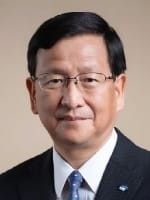
Kazuhiro Hono
The recipient of the 2024 Acta Materialia Gold Medal is Professor Kazuhiro Hono, President of the National Institute for Materials Science (NIMS), Japan.
Kazuhiro Hono received B.S. and M.S. degrees in materials science from Tohoku University in 1982 and 1984, respectively, and a Ph.D. degree in metals science from The Pennsylvania State University in 1988. After working as a postdoctoral researcher
at Carnegie Mellon in 1988, he joined the Institute for Materials Research, Tohoku University, as a research associate in 1990. He then joined the National Research Institute for Metals, now NIMS, as a senior researcher in 1995, where he had a 28-year research career as director of the Metallic Nanostructure Group, NIMS Fellow, director of the Research Center for Magnetic and Spintronic Materials, and executive vice president before being appointed president in 2022.
Early in his career, Prof. Hono pioneered atom probe field ion microscopy and later three-dimensional atom probe (3DAP) characterization of metallic nanostructures to elucidate structureproperty relationships of various alloys with potential industrial applications. He also contributed to the early development of laserassisted 3DAP and demonstrated successful 3DAP analysis of insulator materials using UV lasers. His atomistic characterizations of solute clusters and Guinier-Preston zones in aluminum alloys were pioneering at the time for the study of precipitation sequences at the atomic scale. Extending this research to magnesium alloys, his group developed high-strength heat treatable wrought magnesium alloys with excellent formability. He also pioneered the atomistic characterization of amorphous alloys and their crystallization processes, and the research that demonstrated the crystallization mechanism of the amorphous Fe-Si-B-Nb-Cu alloy served as a guiding principle for the subsequent development of nanocrystalline soft magnetic materials.
In recent years, he has vigorously pursued the multi-scale analysis of the microstructure of rare-earth permanent magnets
through the complementary use of SEM/TEM/3DAP, and established a coercivity mechanism that overturns the conventional view. Dr. Hono’s group developed a grain boundary infiltration method using eutectic alloys that dramatically improves the coercivity of neodymium magnets without using Dy. In addition, systematic TEM studies of the nanostructures of FePt thin films led to the development of FePt-C nanogranular perpendicular thin films, which proved to be the prototype of industrialized FePt-X heatassisted magnetic recording media. His group has also made remarkable advancements in the search for half-metallic Heusler alloys and unprecedented high magnetoresistive performance has been demonstrated in CPP-GMR devices by atomic control of the Heusler FM/NM interfaces, which have attracted interest as potential magnetic sensor applications.
Since 1999, Prof. Hono has also served as a Professor of Materials Science and Engineering at the Graduate School of Science and Technology, University of Tsukuba, and has supervised 34 doctorate students. In addition, he has supervised and mentored more than 20 postdoctoral fellows and visiting scholars from various countries. Prof. Hono’s scientific achievements have been internationally recognized with many awards and honors, including TMS Fellow in 2011, Honorary Member of the Indian Institute of Metals in 2013, Fellow of the International Field Emission Society, Distinguished Lecturer of the IEEE Magnetics Society, the Tsukuba Award in 2016, the REPM Distinguished Achievement Award in 2018, the Japan Institute of Metals Murakami Memorial Award in 2019, the Commendation for Science and Technology by the Minister of Education, Honda Memorial Award in 2020, and the Magnetics Society of Japan Award in 2022.
Professor Hono will receive the Acta Materialia Gold Medal during the TMS 2024 Annual Meeting to be held in Orlando, FL, in March, 2024. A special symposium honoring his achievements is being planned during the 2024 TMS meeting in conjunction with this award.
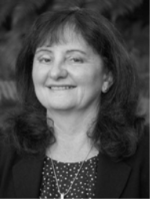
Tresa Pollock
The recipient of the 2023 Acta Materialia Gold Medal is ProfessorTresa M. Pollock, the Alcoa Distinguished Professor of Materials at theUniversity of California Santa Barbara.
Prof. Pollock received her Ph.D. from the Massachusetts Institute ofTechnology in 1989, conducting research with Professor Ali Argon onstrengthening mechanisms in high temperature materials. Prior, she re-ceived a B.S. in Metallurgical Engineering from Purdue University whilealso working at Rolls Royce in Indianapolis, IN on fatigue and fractureof aerospace alloys. Following her Ph.D., Prof. Pollock worked as a re-search engineer at GE Aircraft Engines, where she was co-inventor ofthe single crystal turbine airfoil superalloy René N6, which is presentlyin service. Her academic career began at Carnegie Mellon University,where she moved through the academic ranks from Assistant to FullProfessor and led multi-investigator research programs on intermetalliccompounds. In 2000, she moved to the University of Michigan, whereshe was the L.H. and F.E. Van Vlack Professor of Materials Science andEngineering. At Michigan she led collaborative research efforts on hightemperature magnesium alloys for automotive applications, ultrafastlaser-material interactions and unique crystal growth processes. In 2010Prof. Pollock joined the faculty at the University of California, Santa Bar-bara where she has continued her research and served as DepartmentChair of Materials (2011 — 2017), Associate Dean (2018 - 2021) andInterim Dean of Engineering (2021 — present).
Prof. Pollock’s overarching research interests include the mechan-ical and environmental performance of materials in extreme environ-ments, unique high temperature materials processing paths, ultrafastlaser-material interactions, alloy and coating design and 3-D materialscharacterization. In her most recent research, new alloys and tailoredpowders have been developed for 3D printing of aerospace components.Integrating suites of new computational and experimental design toolsdeveloped over the past decade, a Co-Ni superalloy with exceptionalhigh temperature strength has been designed and demonstrated to havea high tolerance to defect formation over a wide range of laser- andelectron beam powder bed printing conditions. In parallel, new reso-nant ultrasound spectroscopy approaches have been developed to non-destructively characterize the inherently anisotropic structure that de-velops during 3D printing and along other advanced materials process-ing paths. Prof. Pollock’s research on 3D printing builds upon her earlierresearch on solidification of Ni-base alloys, where she studied mecha-nisms of breakdown of single crystal dendritic growth and demonstratedthe thermal gradient and mechanical property benefits of the with-drawal of single crysials into liquid metal coolant baths during Bridgmangrowth.
Prof. Pollock and her team have invented an innovative in-situ to-mography platform, designated the “TriBeam”. The instrument is thefirst to combine femtosecond (10-15 s) laser beam, an ion beam, andan electron beam, along with suites of detectors. The system enables3D imaging of materials and makes it possible to acquire, via rapidlayer-by-layer ablation, a unique set of multimodal information aboutmaterials chemistry and structure, which is then reconstructed into 3Ddata sets. This technique is applicable to virtually all classes of materi-als and provides previously unavailable 3-D structural and chemical in-formation with sub-micron resolution over >mm? volumes needed formaterial property modeling. At the same time, new methods for dis-tortion correction and merging of sub-micrometer 3D multimodal data(chemical + structural + crystallographic) that use machine learning ap-proaches have been developed. The 3D data derived from this tech-nique have enabled new insights to failure mechanisms and have guidedthe development of models for mechanical degradation of nickel-base,titanium-base and refractory and multi-principal element alloys that arecritical to the safety and performance of advanced engineering systems.
Prof. Pollock and collaborators have utilized the scanning electronmicroscope as an experimental platform for other novel in-situ experi-ments. In-situ straining stages integrated with a new digital image corre-lation technique that implements Heaviside functions has enabled strainlocalization during monotonic and cyclic loading to be studied at previ-ously unreachable resolution over statistically relevant volumes of mate-rial. This has provided new insights on the irreversibility of slip duringfatigue, the role of triple junctions in promoting slip band formationand enabled fatigue strength to be predicted from the localization be-havior during the first cycle of loading for a wide spectrum of metallicmaterials. Techniques for dynamic imaging of plastic deformation pro-cesses by transmission scanning electron microscopy have been devel-oped, enabling for the first time, observation of dislocation dynamicsin the lower voltage imaging conditions of the SEM. This approach hasprovided new insights on high temperature deformation mechanisms insuperalloys that involve cooperative precipitate shearing and dynamicformation and removal of superlattice intrinsic stacking faults and an-tiphase boundaries High throughput methods for mapping these fault
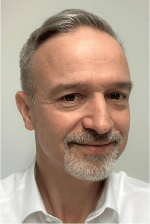
Dierk Raabe
The recipient of the 2022 Acta Materialia Gold Medal is Dr. Dierk Raabe, Director at the Max Planck Institut für Eisenforschung in Düsseldorf, Germany.
Dierk Raabe studied music, metallurgy and metal physics. After his doctorate 1992 and habilitation 1997 at RWTH Aachen in Germany he received a Heisenberg scholarship by the German Science Foundation and worked at Carnegie Mellon University in Pittsburgh. In 1999, he joined Max Planck Society as a director and scientific member. He received the Leibniz Award and an ERC Advanced Grant. He is a Professor of Physical Metallurgy and Metal Physics at RWTH Aachen and honorary Professor at the Katholieke Universiteit Leuven in Belgium. He co-chaired the 2019 Gordon Conference on Physical Metallurgy. Among several institutional responsibilities Dierk Raabe has chaired the board of Governors of RWTH Aachen University, is a member of the decision committee for Germany’s Excellence Initiative, is a senator of the Helmholtz Association of German Research Centers, has been a member of the Council of Science and Humanities of the German government and is a vice senator of the German Academy Leopoldina.
His scientific activities focus on the interplay between lattice defects, their chemistry, processes to modify them and the properties that can be achieved by that. He applies this approach to several fields, particularly Computational Materials Science, multiscale microstructure characterization, alloy design and sustainability of metallic materials.
In Computational Materials Science his expertise lies in micromechanics and its interplay with chemistry and phase transformation. His and his team’s work have led to the software package DAMASK, a free material simulation kit for modeling multi-physics crystal plasticity, thermal, and damage phenomena from the single crystal up to the component scale. It is employed by hundreds of academic users and companies (https://damask.mpie.de).
His expertise in multiscale analysis of complex metallic materials lies in the application of correlative atomic-scale probing of structure and chemistry at the same material position, e.g. chemical decoration and transformation features at internal interfaces, dislocations or even single vacancies, using atom probe tomography, electron microscopy, field ion microscopy, theory and machine learning. This approach enabled discoveries such as low-dimensional transformations of chemically decorated dislocation core regions or partitioning phenomena among several types of adjacent phases and lattice defects.
In alloy design he applies his approach to the trade-off problem between mechanical strength and ductility. As a key mechanism to solve this fundamental conflict he introduced a metastability alloy design principle. This means that the thermodynamic stability of the dominant matrix phase of an alloy is compositionally adjusted in such a way that athermal transformation mechanisms (such as twinning and martensite formation which both profoundly increase the material’s strength) are activated in a specific window of the stress-strain regime where they are needed to counteract localization and micro-damage inside the alloy. This metastability alloy design concept has led to a number of discoveries of new materials with exceptional load-bearing capacity paired with high damage tolerance.
His microstructure-centered approach also helps him in his latest research quest, to identify pathways towards enhanced sustainability of metallic materials, in areas which include reduced-carbon-dioxide primary production, recycling of metals, scrap-compatible alloy design, contaminant- and hydrogen tolerance of alloys, hydrogen-plasma based reduction and hydrogen-based direct reduction of iron ores.
The common scientific motif behind Dr. Raabe’s research activities is the interplay of materials microstructures, i.e. their defect cosmos, and their local chemistry with respect to the features that result from that or can be tuned through it. For revealing these laws, Dr.Raabe uses well-designed experiments in concert with predictive simulations and their consequent engineering application for inventing advanced alloys and processes. The aim is the physics-based design of materials with superior properties and sustainable processes to make them, for the fields of energy, mobility, infrastructures and health from the atomic to the macro-scale under consideration of synthesis and manufacturing.
Dr. Raabe will receive the Acta Materialia Gold Medal Medal during the 2022 TMS Spring Meeting to be held in Anaheim, California, from February 27 – March 3, 2022.
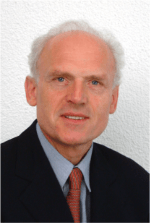
Günter Gottstein
The recipient of the 2021 Acta Materialia Gold Medal is Prof. emeritus Dr. Dr. h. c. Günter Gottstein, Distinguished Senior Professor of RWTH Aachen University. Prior to his retirement, he was Professor and Director of the Institute of Physical Metallurgy and Metal Physics (IMM) at RWTH Aachen University.
Prof. Gottstein studied physics at RWTH Aachen University and obtained his diploma in 1969. In 1973 he was promoted in metal physics to Dr. rer. nat., and became Dr. habil. of Physical Metallurgy and Metal Physics of the Faculty of Mining and Metallurgy of RWTH in 1979. In the same year he moved to the USA to work as a visiting scientist at Argonne National Laboratory, then as a visiting associate professor at MIT and, in 1983, became an associate professor in the Department of Metallurgy, Mechanics and Materials Science of Michigan State University where he was promoted to full professor in 1985. In 1989 he returned to RWTH Aachen University to succeed Kurt Lücke as director of IMM. From 1993 through 1999 he was also appointed head of the Central Electron Facility of RWTH and served as Dean of the Faculty of Mining Metallurgy and Geosciences from 1996 through 1998. He became Professor Emeritus in 2013 and was appointed as the first Distinguished Senior Professor of RWTH Aachen University in 2014.
Prof. Gottstein dedicated his scientific activities to the fields of materials modeling and simulation, interface science, particularly grain boundary migration and the properties of grain boundary junctions, crystallographic texture, high temperature plasticity with focus on dynamic recrystallization, intermetallic matrix composites, and properties of magnesium alloys.
In 1994 he established the collaborative research center on ‘Integral Materials Modeling’ (now known as Integrated Computational Materials Engineering ‘ICME’), where computational tools were developed for through process modeling to predict the final material properties from the knowledge of a given process scheme on the basis of microstructural development. The research center was funded by the Deutsche Forschungsgemeinschaft for 12 years and was succeeded by a transfer center to make the results available to industry. In fact, many of the tools and models are currently used in practice, particularly in the aluminum industry. In the field of crystallographic texture, he devoted his research to the measurement of microtexture, utilizing synchrotron radiation for crystallographic orientation measurements in microscopic volumes and applying advanced informatic tools, such as the Hough transformation, for an automated evaluation of diffraction patterns. With the advent of Electron Back Scatter Diffraction in Scanning Electron Microscopes he contributed to the early development of the semi-automated evaluation of Kikuchi-patterns, critically evaluated the statistical relevance of microtexture measurements and developed devices for macro-and microtexture measurements at very high temperatures, especially for in-situ measurements of transformation textures in steels. With his colleague, Lasar Shvindlerman of the Russian Academy of Sciences, he established a laboratory at IMM for the measurement of grain boundary properties. Important results include the migration of grain boundaries under a magnetic driving force, high angle grain boundary motion enforced by an applied shear force and, jointly with Dr. Shvindlerman, the measurement of energy and mobility of grain boundary junctions. The measurements and theoretical analysis of junction properties and their relevance for grain growth, especially in nanocrystalline solids, constitute pioneering work in this field and are considered as seminal contributions to our current understanding of microstructural evolution during grain growth. Further fundamental contributions pertain to the role of annealing twinning for the occurrence of dynamic recrystallization and the fabrication of fiber reinforced NiAl composites for very high temperature applications beyond superalloys, or specific microstructural models tailored for modern computer architectures with very high computational speed to allow physical models to be utilized for process control.
Prof. Gottstein’s scientific accomplishments have been recognized with many awards and honors, including the Masing Award of German Metallurgical Society, 1982, the Heisenberg Research Fellowship, German Science Foundation, 1981-1983, the Max-Planck-Research Award of the Alexander von Humboldt-Foundation and the Max-Planck-Society, 1998, the Sawamura Award of the Iron and Steel Institute of Japan, 2002, the Heyn Medal, German Materials Society, 2003, the Werner Köster Award, Deutsche Gesellschaft für Materialkunde, 2005, the Gold Medal Award, Federation of European Materials Societies, 2011, the Best Publication Award, Faculty of Georessources and Materials Engineering, RWTH Aachen University (2013), the C.S. Smith Award of the ReX&GG Conference Series, 2013, the Kurdjumov Medal, Russian Academy of Sciences, 2014, the TMS Distinguished Educator Award (2015), the AMAP Research Award (2015), and the Hans Bunge Award of the ICOTOM Conference Series, 2020. He was honored as Honorary Professor, Moscow Institute for Steel and Alloys, Russia, (2006), Honorary Professor, Northeastern University, Shenyang, China (2007), Honorary Doctorate, Technical University, BA Freiberg, Faculty of Materials Science and Materials Technology (2009), Honorary member, Deutsche Gesellschaft für Materialkunde (2010), RWTH Distinguished Senior Professor (2014). He served as editor of Acta Materialia (2004-2019) and was a member of the editorial boards of several journals.
Prof. Gottstein will receive the Acta Materialia Gold Medal at the 150th Anniversary TMS meeting to be held in Orlando, Florida in March 2021.
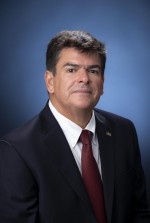
Enrique J. Lavernia
The recipient of the 2020 Acta Materialia Gold Medal is Dr. Enrique J. Lavernia, Provost and Executive Vice Chancellor for the University of California, Irvine. As provost, Dr. Lavernia is UCI’s chief academic and operating officer, with primary responsibility for the university’s teaching and research enterprise, which includes 16 schools, nearly 5,500 faculty and 192 degree programs.
Before joining UCI, Dr. Lavernia was engineering dean and a Distinguished Professor of Chemical Engineering and Materials Science at UC Davis. He also served as provost and executive vice chancellor for two years as UC Davis transitioned to a new chancellor. During his tenure as dean of the UC Davis College of Engineering, it evolved into one of the nation’s fastest-growing and most prestigious engineering schools. Nine members of the faculty, including Dr. Lavernia, became members of the National Academies. Research expenditures doubled, 88 professors were hired and student enrollment increased by 22 percent, with significant increases in female and Hispanic undergraduates.
Dr. Lavernia earned a Ph.D. in Materials Engineering from the Massachusetts Institute of Technology. His research interests include the synthesis and behavior of nanostructured and multi-scale materials with particular emphasis on processing fundamentals and physical behavior; thermal spray processing of nanostructured materials; spray atomization and deposition of structural materials; high temperature-high pressure atomization processes; and mathematical modeling of advanced materials and processes.
In 2019, he was awarded an honorary doctorate of Science in Technology from Aalto University in Helsinki, Finland. In 2018, he received the Distinguished Engineering Educator Award by the National Engineers’ Council. He became a member of the National Academy of Inventors in 2017. In 2016, Dr. Lavernia was elected a Fellow of the National Academy of Inventors and he received the Alexander von Humboldt Foundation Research Award as well as the Leadership Award from the TMS Society. In 2015, he was inducted into the Hispanic Hall of Fame by the HEENAC Great Minds in STEM and was appointed Distinguished Professor at UC Irvine. He was elected to the National Academy of Engineering in 2013. The same year, he received the Edward DeMille Campbell Memorial Lectureship and the ASM International Gold Medal Award. He received the Hispanic Engineer National Achievement Award and the Society for the Advancement of Chicanos and Native Americans in Science Distinguished Scientist Award in 2011.
Named Presidential Young Investigator by the National Science Foundation, Dr. Lavernia also received a Young Investigator Award from the Office of Naval Research. He is a Fellow of the Minerals, Metals and Materials Society, the Materials Research Society, the American Society of Mechanical Engineers, the American Association for the Advancement of Science, and ASM International.
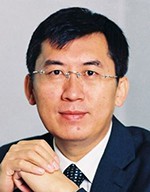
Ke Lu
The recipient of the 2019 Acta Materialia Gold Medal Award is Dr. Ke Lu, Professor and Director of the Shenyang National Laboratory for Materials Science, Institute of Metal Research (IMR) of Chinese Academy of Sciences (CAS), China. The Gold Medal will be presented during the 2019 TMS Spring Meeting and Exhibition in San Antonio, Texas.
Dr. Ke Lu received his B.S. degree in Materials Science in 1985 from Nanjing University of Science & Technology (China) and M.S. and Ph.D. degrees in Materials Science in 1988 and 1990, respectively, from IMR of CAS (Shenyang, China). He joined IMR in 1990 as an assistant research Professor and was promoted to full professor in 1993. In 1997 he was appointed as Director of State Key Laboratory for Rapidly Solidified Non-equilibrium Alloys in IMR. He served as the Director-general of IMR during 2001 through 2012. As the founding director, Prof. K. Lu has been leading the Shenyang National Laboratory for Materials Science since 2000. During 2005-2007, he served as the Dean of School of Materials Science and Engineering, Shanghai Jiaotong University. Since 2013, he is a Principal Investigator of Herbert Gleiter Institute for Nanoscience, Nanjing University of Science and Technology.
As a leading researcher in the field of nanostructured materials, Dr. Ke Lu contributed to the advancement of materials science and engineering with world-class, trend-setting research. His highly cited research covers nanostructured metals, amorphous alloys, and thin films, dealing with thermodynamic and kinetics of processing and phase transformation, stability and melting, mechanical and tribological properties, physical and chemical properties, etc. His major scientific accomplishments include: (i) discovery of nano-twinned materials and development of nano-twin strengthening methodology; (ii) development of surface nanocrystallization technology and discovery of unique behaviors of gradient nano-grained structures in metals and alloys, and (iii) the stabilization and plastic deformation of nano-grained metals at extreme sizes.
Prof. Lu is a member of the Chinese Academy of Sciences (2003), the World Academy of Sciences for Developing Countries (2004), the German National Academy of Sciences Leopoldina (2005), and National Academy of Engineering of USA (2018, foreign member) and has received numerous awards from around the world.
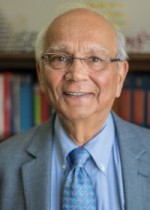
Subhash Mahajan
The 2018 Acta Materialia Gold Medal Recipient is Professor Subhash Mahajan, Distinguished Professor in the Department of Materials Science and Engineering at the University of California, Davis.
Subhash Mahajan received his undergraduate and graduate education at the Indian Institute of Science, Bangalore, and the University of California, Berkeley, respectively. Prior to his current position, he was a Regents’ Professor and a Fulton Technical Fellow in the Ira A. Fulton School of Engineering, Arizona State University (ASU). At ASU, he held administrative appointments as Chair of the Department of Chemical and Materials Engineering from 2000 to 2006, and the Founding Director of the School of Materials from 2006 to 2009. He previously held appointments at The Atomic Energy Research Establishment, Harwell, England; Bell Telephone Laboratories, Murray Hill, NJ; and Carnegie Mellon University in Pittsburgh, PA.
Professor Mahajan’s research focuses on two thematic areas: structure-property relationships in functional materials and deformation behavior of solids. Over the years, he received many awards for his excellent contributions to research and education of electronic materials. These include: Fellow of ASM, MRS, and TMS; the John Bardeen Award and 2004 Educator Award from TMS; the Albert Sauveur Achievement Award from ASM and the ASM Gold Medal in 2011. In 2013 he received the Albert Easton Distinguished Teacher Award. He delivered the 2015 Institute of Metals Lecture and received the Robert Franklin Mehl Award. He recently received the Distinguished Alumnus Award of the Alumni Association of the Indian Institute of Science, Bangalore. He presented the Campbell Lecture of ASM in 2007 and the Lee Hsun Lecture of the Chinese Academy of Sciences in 2009. He is a Member of the National Academy of Engineering and a Foreign Fellow of the Indian National Academy of Engineering.
Professor Mahajan will present an overview of his research at the Acta Materialia Awards Symposium and receive the Gold Medal at the Awards Ceremony during the TMS Annual Meeting in Phoenix, AZ in March 2018.
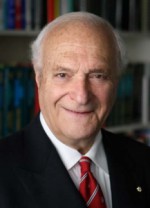
John Jonas
The recipient of the 2017 Acta Materialia Gold Medal is Dr. John J. Jonas, Henry Birks Professor Emeritus, Department of Mining and Materials Engineering, McGill University, Montreal, Canada. Dr. Jonas was born in Montreal and graduated from McGill University with a bachelor’s degree in Metallurgical Engineering in 1954. After working for one year at the Steel Company of Wales in Port Talbot, he attended Cambridge University on an Athlone Fellowship and received a Ph.D. degree in Mechanical Sciences in 1960. On returning to Montreal, he began teaching “mechanical metallurgy” at McGill and built up a research laboratory that includes a number of specialized testing machines and is particularly well equipped for experimental investigations in the field of high temperature deformation.
Professor Jonas’ most important scientific contributions are related to determining what happens to sheet steel when it is red hot and flying through a rolling mill at 100 km/hr. The basic phenomena involved include dynamic and post-dynamic recrystallization, dynamic transformation and retransformation, and the dynamic and strain-induced precipitation of carbonitrides. He and his co-workers have made seminal contributions to all three of these areas of research. An important related innovation was establishment of the laboratory method of determining the Tnr (temperature of no-recrystallization) during rolling, a procedure that is now employed in rolling mills worldwide. This work has resulted in major improvements in the understanding and control of the microstructural changes taking place during steel processing and has led to more accurate computer models for the control of industrial rolling mills.
In addition to his research in ferrous metallurgy, Professor Jonas has made numerous contributions to the understanding of the deformation behavior of non-ferrous metals. These have included explanations of variant selection of twins in Mg and Ti, of the causes of plastic instability and flow localization during metal forming, and of texture development during deformation, annealing and phase transformation.
He has received numerous awards for this work, including the Réaumur and Gold Medals of the French Metallurgical Society, the Hatchett Medal of the Metals Society (U.K.), the Airey, Dofasco and Alcan Awards of the Canadian Institute of Mining and Metallurgy, the Gold Medal of the Canadian Metal Physics Association, the NSERC Award of Excellence, the Killam Prize for Engineering, the Michael Tenenbaum Award of the American Institute of Metallurgical Engineers, the Hunt Silver Medal of the US Iron and Steel Society, the Barrett Silver Medal and G. Macdonald Young Award of the American Society for Metals, the Alexander von Humboldt Research Award (Germany), and the Yukawa Silver Medal and two Sawamura Bronze Medals of the Iron and Steel Institute of Japan. Professor Jonas has been elected a Fellow of the American Society for Metals, Royal Society of Canada, Canadian Academy of Engineering, Canadian Institute of Mining and Metallurgy, and Hungarian Academy of Sciences. He is an Honorary Member of the Iron and Steel Institute of Japan and of the Indian Institute of Metals. He was made an Officer of the Order of Canada in 1993, a Chevalier of the Order of Quebec in 2000, and received the Quebec prize for science (Prix du Québec - Marie Victorin) in 1995. He has served as a visiting professor in numerous countries, including Argentina, Australia, Belgium, Brazil, Britain, China, France, Germany, Holland, Hungary, India, Iran, Israel, Japan, Mexico, South Africa, South Korea, Spain, Taiwan, the USA and the USSR.
In 1985, Dr. Jonas was appointed to the CSIRA/NSERC Chair of Steel Processing at McGill, a position which was funded jointly by the Canadian Steel Industry Research Association and the Natural Sciences and Engineering Research Council of Canada. In this capacity, he worked closely with the Canadian steel industry, and collaborated in the solution of a number of important processing problems. He and his colleagues have been granted five sets of international patents associated with steel rolling, three of which have been assigned to the sponsoring companies.
He has trained over 200 students and research fellows in the specializations outlined above and he and his students have published more than 800 papers, 100 of them in Acta and Scripta Materialia. His current h-index (Hirsch number) is 83 and he has more than 25,000 citations to his credit.
Dr. Jonas will receive the Gold Medal at the TMS Annual Meeting in San Diego in March 2017.
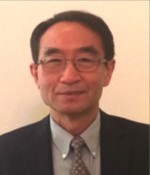
Sungho Jin
The recipient of the 2016 Acta Materialia Gold Medal is Dr. Sungho Jin, Professor Emeritus of University of California, San Diego. Prior to his recent retirement, he was Distinguished Professor of Materials Science in the Departments of Mechanical and Aerospace Engineering at UCSD and held Iwama Endowed Chair. He also served as the Director of the university-wide Materials Science & Engineering Program at UCSD for the past 13 years.
Sungho Jin received B.S. degree in Metallurgy in 1969 from Seoul National University, and M.S. and Ph.D. degrees in Materials Science in 1971 and 1974, respectively, from the University of California, Berkeley. He joined Bell Laboratories at Murray Hill, New Jersey in 1976 as Member of Technical Staff and later became Technical Manager to carry out forefront materials/devices research for 26 years. He then joined UC San Diego in 2002 for academic educational service and research activities for 13 years. He also served as a Principal Investigator at the Center for Magnetic Recording Research (CMRR) at UC San Diego.
Dr. Sungho Jin contributed to the advancement of science and technology with worldclass, trend-setting research in the broad fields of electronic, magnetic, optical, superconducting, electronic packaging, and MEMS materials and devices, nano-bio materials, and energy materials. The pioneering and leadership nature of his work is evident by his publications (~400 including 10 in Nature or Science), Science Citation Index (~17,000), US Patents (~250 issued or pending), and invited or keynote talks (~140) at major professional societies. His noteworthy accomplishments include: the discovery (and naming) of Colossal Magneto-Resistance (CMR) phenomenon in the perovskite La-Ca-Mn-O in 1994; his publication in Science, “Thousandfold Change in Resistivity in Magnetoresistive La-Ca-Mn-O Films”, which has ~4,000 citations, and touched upon imagination of many scientists and immensely stimulated world-wide research on CMR manganite materials for a variety of electronic and magnetic applications including ultra-high-density magnetic recording and future spintronics devices; his development of ductile permanent magnet alloys of Fe-Cr-Co (Chromindur) based on spinodal decomposition for reliable and miniaturized telephone receiver applications, for which as many as 10 million cup-shaped magnets per year were manufactured and used in-high quality AT&T telephones; he demonstrated, for the first time, the feasibility of high Tc superconductor (HTSC) wires from the mechanically brittle ceramic superconductors; he initiated the trend and displayed leadership in promoting Lead-Free Solders R&D by organizing the first seven “LeadFree Solder” symposia for the Metallurgical Society meetings (1993-1997); and he demonstrated that sharply bent zig-zag carbon nanotubes can be fabricated using changes of electric field direction during CVD growth.
More recently, Professor Jin discovered that vertically aligned TiO2 nanotubes on Ti implant metal surface enhanced bone growth by 300%. He discovered novel electronic switching behavior and logic in CVD synthesized carbon nanotube Y-junctions. He developed “Nano-Solders” that can be soldered at low temperatures but can be converted to a higher-melting-point (415oC), tough and ductile intermetallic compound to enable thermally more durable, fatigue- and creep-resistant solder electronic packaging. He designed and produced drug-delivery, hollow sphere nanocapsules with trapped magnetic nanoparticles for magnetically guided tissue penetration and remotely switchable, on-demand release of anti-cancer medications. He designed and demonstrated Smell-o-Vision scent generating device demonstrated for future TV and cell phone displays to release synchronized scents when the corresponding scenes come up on TV screen. This work received much news media attention in 2011 including ABC, NBC and CNBC TV network coverage and Scientific American coverage. Virtual Reality (VR) headsets capable of synchronized scent release have also been demonstrated. He designed new, highly efficient sunlight absorber layer materials for Concentrating Solar Power (CSP) generator systems. He designed smart textiles that can automatically change insulation in response to ambient temperature change to make a person feel always comfortable, thus saving building electrical energy for air-conditioning or heating.
Dr. Jin’s scientific accomplishments have been recognized with many awards and honors, including an election to the US National Academy of Engineering (1999), Fellow of American Physical Society (2003), Fellow of American Society for Metals (1994), TMS Fellow (2000), and inaugural MRS Fellow (2008). He received various awards including the John Bardeen Award (2007), Nano 50 Award (2005), the Albert-Sauveur Achievement Award (2009), the CRS Jorge Heller JCR Award (2012), and TMS Functional Materials Division Distinguished Service Award (2015). He also received the Ho-Am Engineering Prize from Ho-Am Foundation in Korea in 2000 (the most prominent honor in Korea in science and technology). Dr. Jin also contributed to the profession by serving as Principal Editor of Journal of Materials Research (1998 – 2005), as Editor of Acta Materialia (2007–present), as Guest Editors for three JOM Special Topics Series in 1997-1998 on various functional materials, and as Editor for Electronic Packaging, New Encyclopedia of Materials Science and Technology (1999).
Professor Jin will receive his Gold Medal during the 2016 TMS Annual Meeting and Exhibition in Nashville, TN, February 14-18, 2016. A special symposium honoring his accomplishments is being planned during the 2016 TMS Meeting in connection with this award.
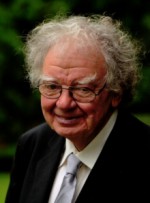
David Embury
The recipient of the 2015 Acta Materialia Gold Medal Award is Professor J. David Embury who holds the title of University professor at McMaster University in Canada and is also Adjunct professor at the Department of Materials Engineering, University of British Columbia in Canada and at the School of Materials Science and Engineering in Shanghai Jiaotong University, China. Dr Embury received his B.Sc in Metallurgy from the University of Manchester UK in 1960 and his PhD in Metallurgy from the University of Cambridge UK in 1963. After completing his doctoral thesis on Studies of Precipitation in Al alloys using Transmission Electron Microscopy he joined the Bain Laboratory of US Steel under the direction of Dr Lawrence Darken. In 1966 he joined the Department of Metallurgy at McMaster University in Canada where he served in a variety of positions including Head of department, member of university senate and Acting director of the Brockhouse Institute for Materials Research. A significant portion of Dr Embury’s research has been at the interface of Materials and Mechanics and he has made contributions in topics such as—
- Ductile Fracture
- Metal forming
- The development of Ultra-high strength materials
- Drawing of Pearlite and co-deformation processes
- Precipitation in Aluminium alloys
- The understanding of substructural strengthening
- Materials for High Field Magnets
- Hybrid and Architectured Materials
In addition to his teaching and research at McMaster, Dr Embury has worked on Educational Aid programs for the government of Canada and has held Visiting Professorships in a number of countries including France, Belgium, Norway, Australia, Italy, Brazil, Argentina, Turkey and China. Dr Embury has contributed to the development of Educational methods in Materials Science and has been active in curriculum development in the past few years.
Dr Embury’s work has been recognised by a number of learned societies. In 1989 he was elected as a Fellow of the American Society of Mining and Metallurgy, in 1991 to a fellowship of the Royal Society of Canada and in 1992 as a Foreign Associate of the US National Academy of Engineering. He was granted the title Doctor Honoris Causa by NTNU Trondheim Norway in 2006. Dr Embury now resides in France and was awarded La Grande Médaille de la Société Française de Matériaux et de Métallurgie in 2009.
In accepting the 2015 Acta Materialia Gold Medal Award, Dr Embury wishes to acknowledge his debt and his gratitude to all of his students and colleagues in both Canada and throughout the world.
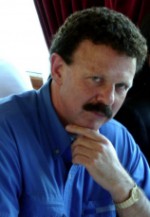
Robert O. Ritchie
The winner of the 2014 Acta Materialia Gold Medal is Robert O. Ritchie, the H.T. & Jessie Chua Distinguished Professor of Engineering in the Departments of Materials Science & Engineering. at the University of California Berkeley and Senior Faculty Scientist in the Materials Sciences Division at the asscoiated Lawrence Berkeley National Laboratory. Robert Ritchie recevied the B.A. degree in Physics and Metallurgy in 1969, M.A. and Ph.D. degrees in Materials Science in 1973, and the Sc.D. degree in 1990, all from Cambridge University. Following periods as the Goldsmith’s Junior Research Fellow in Materials Science at Churchill College, Cambridge (1972-74) and as a Miller Research Fellow at UC Berkeley (1974-76), he joined the faculty in Mechanical Engineering at M.I.T. where he became the Class of 1922 Associate Professor in 1979. He returned to Berkeley as a faculty member in 1981. He was Deputy Director of the Materials Sciences Division at the Lawrence Berkeley Laboratory from 1990 to 1994, Director of the Center for Advanced Materials there from 1987 to 1995, and Chair of the UC Berkeley Materials Science & Engineering Department from 2005 to 2011.
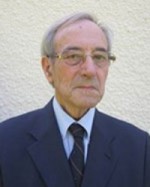
Andre Pineau
The winner of the 2013 Acta Materialia Gold Medal is André Pineau, currently Emeritus Professor at the Ecole des Mines de Paris’s Centre des Matériaux. André Pineau received an Engineering/Metallurgy degree from the Ecole des Mines de Nancy in 1965, and a PhD degree in Physical Sciences from the University of Nancy in 1969. He joined the Ecole des Mines de Paris in 1965, where he largely contributed to the creation of the Ecole des Mines’s Centre des Matériaux. This Centre has become one of the largest of its kind in Europe specialized in the field of physics and mechanics of materials with about 200 people, including 90 PhD students. He was promoted to Professor in 1978 and was Head of the Ecole des Mines’s Materials Science and Engineering Undergraduate Department from 1979 to 2006. He was responsible for the Centre des Matériaux’s Mechanical Metallurgy Research Unit, associated with the National Scientific Research Centre of France (CNRS), from 1978 to 1994. From very early on in his career, he developed strong links internationally, e.g. with MIT, where he was twice a Visiting Professor at the Materials Science and Engineering Department (for a year in 72/73 and again for 6 months in 1983) working with Professors R. Pelloux, A. Argon and F. McClintock; with Kyoto University in 1977 where he collaborated with Professor I. Tamura on phase transformations in steels.
Professor Pineau’s scientific career has been repeatedly recognized with prestigious awards and honors, including the Rist Price from the Société Française de Métallurgie (SFM) in 1974, the Osmond Price from the Société d’Encouragement pour l’Industrie Nationale (SEIN) in 1983, the H. Becquerel Price from the French Academy of Sciences in 1987, the CNRS Silver Medal in 1989, the Portevin Medal from the Société Française de Métallurgie et Matériaux (SF2M) in 1991, the Gaz de France Price from the French Academy of Sciences in 1992, the Great Medal from SEIN in 1994, the Griffith Medal from European Structural Integrity Society (ESIS) in 1996, the Gold Medal from the Federation of European Materials Societies (FEMS) in 1997, the Honorary Medal from the SF2M in 1999, and the ASTM George R. Irwin Medal in 2011. His contributions have also been recognized with memberships of many scientific advisory boards and committees. Professor A. Pineau was elected as a member of the Comité des Applications of the French Academy of Sciences (CADAS) in 1994, of the French Academy of Engineering in 2000, and as a fellow of the Société Française de Métallurgie et Matériaux (SF2M). He has also been a member of the Editorial Board of the journal on Fatigue and Fracture of Engineering Materials and Structures, and the editor of the Journal of Nuclear Engineering and Design. He was elected as Vice President of the European Structural Integrity Society (ESIS) in 2002, and as an Honorary Member of the Deutscher Verband für Materialforschung und –Prüfung (DVM) Society in Germany. He was a scientific advisor for Electricité de France (EDF) in 1994, for Usinor from 1998 to 2006, and has been for the French Atomic Energy Authority (CEA) since 1980. He has also served as an expert in numerous material and structural failure cases for the nuclear, transportation, pipeline, aeronautical and aerospace industries.
Professor André Pineau has published more than 300 journal articles, including 20 in Acta Materialia and Scripta Materialia, five textbooks, co-authored with D. François and A. Zaoui, and co-edited and co-authored 20 others dealing with the mechanical behavior of metallic materials. He is a passionate educator and has been an inspirational force to many undergraduate students, to the 85 PhD students who studied under his supervision and to his colleagues at the Ecole des Mines and at international institutions. As André Pineau has always been concerned with the education of school children, he is also currently strongly engaged in the development of practical scientific activities in elementary schools.
His early research was devoted to the study of the precipitation strengthening in nickel and iron base alloys. His main contributions in this field, with R. Cozar, were the discovery of the co-precipitation of γ’ and γ” phases leading to the “compact morphology” and to the development of a theory on the raftening of γ’ precipitates in nickel base single crystals, work published in Acta Metallurgica in 1976. He was also involved (with B. Thomas, F. Lecroisey and L. Remy) in a pioneering study which identified the effects of temperature on the stacking fault energy of FCC metals and alloys. His research group also largely contributed to the understanding of the strengthening effect associated with mechanical twinning in low stacking fault energy alloys, such as Fe-Ni-Cr and also Fe-Mn alloys which form now the bases of TWIP steels used in the automotive industry. With R. Pelloux from M.I.T., he also investigated the effect of strain-induced martensitic transformation on the fatigue behavior of unstable stainless steels. In the early 70s, he focused his research activities on high temperature fatigue and creep-fatigue oxidation interactions in nickel base alloys and austenitic stainless steels. His work (with E. Andrieu and R. Molins) showed in particular the existence of a critical oxygen partial pressure below which the fracture mode remains transgranular in Ni base alloys. He identified the mechanisms of oxygen penetration along grain boundaries which are responsible for intergranular fracture of these materials, and the interactions between transgranular fatigue cracks and intergranular creep damage in stainless steels (with C. Levaillant). The resulting understanding and approach has inspired to some extent the R5 assessment procedure for the high temperature response of metallic structures developed in the United Kingdom, in particular those used for the initiation of cracks by creep and fatigue damage. He also conducted a number of studies devoted to multiaxial fatigue, such as the effects of the environment and loading paths on the directional aspect of crack initiation.
In the 80s, André Pineau concentrated his research efforts on the study of fracture (ductile, brittle, ductile-to-brittle transition) in ferritic steels used for the fabrication of nuclear pressurized water reactors (PWR) and in duplex stainless steels. He developed the so-called “local approach to fracture” which is now widely used by engineers and scientists worldwide. This approach, which is mainly based on the micromechanisms of failure ahead of a crack tip, has largely contributed to the improvement of the transferability of laboratory test results to components. His work in this area over the past thirty years has greatly influenced the development of fracture mechanics standards (i.e. fracture toughness characterization and structural integrity assessments), and has thus had a profound impact in failure analysis, structural integrity code and material development in a broad range of industries, such as the automotive, aerospace, nuclear, pressure vessel and piping industries. In 1981, work by one part of his research group (also known as “Beremin”) on cleavage fracture revealed for the first time that the fracture toughness of ferritic steels in the lower shelf regime is not an intrinsic property but depends on specimen size. Since then, the local approach to fracture methodology has become an established discipline in its own right, being largely used to explain a number of results which cannot be easily rationalized using a global fracture mechanics approach. André Pineau is continuing his work on the micro-mechanisms of fracture, in particular the effect of the bimodality of failure modes (cleavage and Intergranular damage) which can be found in thick components containing segregated zones, and the crossing of a grain boundary with a large twist component by a cleavage crack.
Professor Pineau will receive his Gold Medal during the December 2013 MRS Fall meeting in Boston, MA. A symposium, entitled “Materials: Fundamentals of Fatigue and Fracture”, will be held in connection with this award.
2012
Terence Langdon
U.S.A.
2011
Jay Narayan
U.S.A.
2010
Akihisa Inoue
Japan
2009
Austin Chang
U.S.A.
2008
Karl Gschneidner
U.S.A.
2007
Herbert Gleiter
Germany
2006
Subra Suresh
U.S.A.
2005
George D.W. Smith
U.K.
2004
Raymond Smallman
U.K.
2003
Gareth Thomas
U.S.A.
2002
Robert Cahn
U.K.
2001
Chain T. Liu
U.S.A.
2000
Anthony Kelly
U.K.
1999
Jean Philibert
France
1998
Tsuyoshi Masumoto
Japan
1997
Peter Hirsch
U.K.
1996
Vaclav Vitek
U.S.A.
1995
Thaddeus Massalski
U.S.A.
1994
Peter Haasen
Germany
1993
William Nix
U.S.A.
1992
Jerome Cohen
U.S.A.
1991
Jun Kondo
Japan
1990
James C.M. Li
U.S.A.
1989
John Hirth
U.S.A.
1987
Robert Balluffi
U.S.A.
1986
Michael Ashby
U.K.
1985
Egon Orowan
U.S.A.
1984
Jack Christian
U.K.
1983
Jacques Friedel
France
1982
Charles Barrett
U.S.A.
1980
Hans Weertman
U.S.A.
1981
Morris Cohen
U.S.A.
1979
David Turnbull
U.S.A.
1978
Mats Hillert
Sweden
1977
John Cahn
U.S.A.
1976
Alan Cottrell
U.K.
1975
W.G. Burgers
Netherlands
1974
Bruce Chalmers
U.K.
Note: In 1989 the nomenclature of the award was changed so that each year’s award is identified with the year of its presentation. Prior to this, the award was identified by the year in which the selection was made. As a result, there is no award identified with 1988.